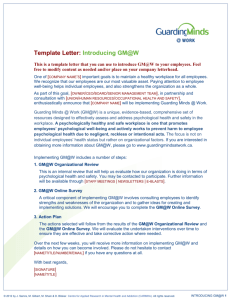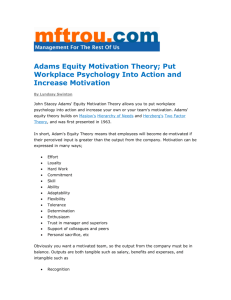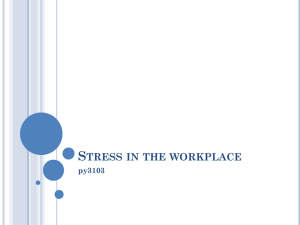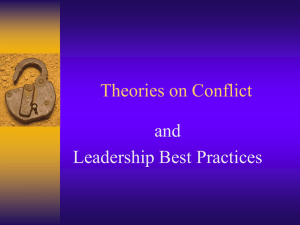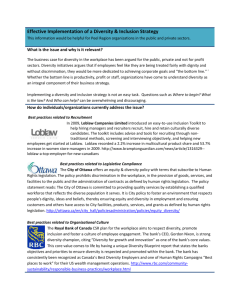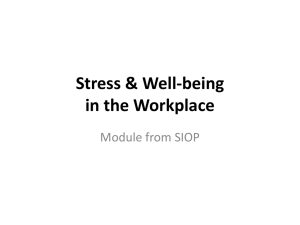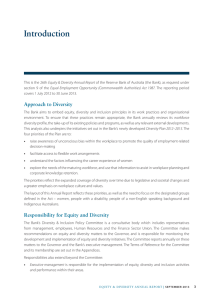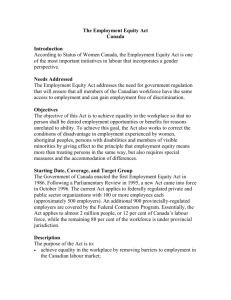I/O Psychology Final Exam Review Outline
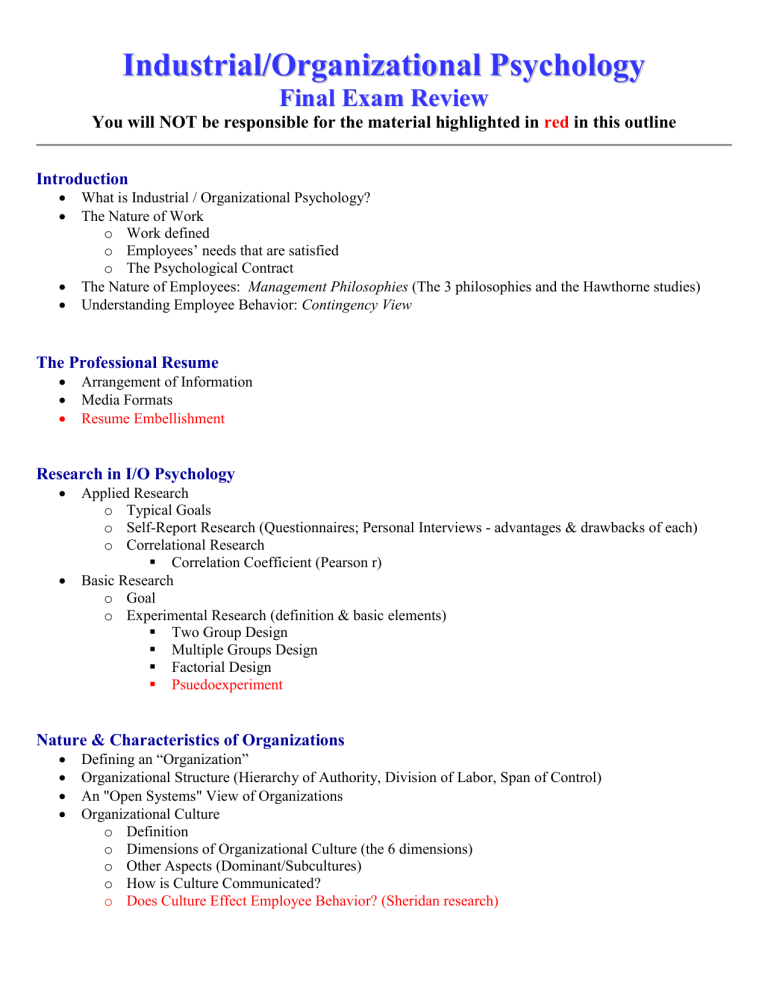
I I n d u s s t t r i i a l l / / O r g a n i i z a t t i i o n a l l P s s y c h o l l o g y
F i i n a l l E x a m R e e v i i e w
You will NOT be responsible for the material highlighted in
red
in this outline
Introduction
What is Industrial / Organizational Psychology?
The Nature of Work o Work defined o Employees’ needs that are satisfied o The Psychological Contract
The Nature of Employees: Management Philosophies (The 3 philosophies and the Hawthorne studies)
Understanding Employee Behavior: Contingency View
The Professional Resume
Arrangement of Information
Media Formats
Resume Embellishment
Research in I/O Psychology
Applied Research o Typical Goals o Self-Report Research (Questionnaires; Personal Interviews - advantages & drawbacks of each) o Correlational Research
Correlation Coefficient (Pearson r)
Basic Research o Goal o Experimental Research (definition & basic elements)
Two Group Design
Multiple Groups Design
Factorial Design
Psuedoexperiment
Nature & Characteristics of Organizations
Defining an “Organization”
Organizational Structure (Hierarchy of Authority, Division of Labor, Span of Control)
An "Open Systems" View of Organizations
Organizational Culture o Definition o Dimensions of Organizational Culture (the 6 dimensions) o Other Aspects (Dominant/Subcultures) o How is Culture Communicated? o Does Culture Effect Employee Behavior? (Sheridan research)
Performance Appraisal
Definition (purpose; timing)
Possible Measures of Job Performance
Conceptual Issues (Relevance, Deficiency, Contamination)
Ratings as a Measure of Job Performance o Common Rating Errors o Reducing Rating Errors o Effects of Ingratiating Behaviors (types of ingratiating behaviors; Watt research)
Job Satisfaction
Definition as an Attitude
Major ‘Components’ of Job Satisfaction
Theories of Job Satisfaction o Two-Factor Theory (definition)
Herzberg research; Hygiene & Motivator factors o Value (Comparison) Theory (definition)
Test of Value (Comparison) Theory (McFarlin & Rice research) o Dispositional Theory (definition)
Test of Dispositional Theory (Cropanzo, James, & Konovsky research)
Employee Motivation
Definition
Theories of Motivation (Content and Process Theories) o o
Job Characteristics Theory
Key Job Characteristics
Complete Model (characteristics / critical psych. states / outcomes)
Motivating Potential Score
Learning Theory
Possible Consequences of Behavior (Pos/Neg Reinforcement & Pos/Neg Punishment)
Observational Learning o o
Equity Theory
Assumption / Definition
Inputs / Outcomes
Basics (Three Possible Results)
How Do We Restore Equity? (Behavioral & Psychological Reactions)
Equity and Pay Cuts (Greenberg research)
Equity and Office Status (Greenberg research)
Additional Issues (Equity Sensitivity & False Uniqueness)
Expectancy Theory
Three components and three employee beliefs
Employee Selection
-
Applicant Screening
Pre-Employment Drug Testing o Techniques o An Evaluation of Preemployement Drug Testing (Normand) o Implications
How Do Recruiters Evaluate Applicants? o o
Policy Capturing Research / Multiple Regression
What Factors Do Recruiters Use to Make Decisions? (Gardner, Kozloski, & Hults research)
Employee Selection – The Selection Interview
Goals of Selection Interview
Format of Interaction
Basic Model of Person Perception o Spontaneous Stage o Deliberative Stage (Confirmation Bias)
Major Problem
Employee Selection – Validation of Psychological Tests
for use in Selection
Test "Validity" (Basic Psychological View and I/O Psych view)
Test Validation Study (Criterion-Related)
o The 4 steps; validity coefficient
Basic Assumptions
Determining a Test Cutoff Score
Outcomes of Selection Decisions o o
Effect of Higher Test Cutoff Score
Effect of Higher Test Validity
Employee Selection
– Standardized Tests
A Standardized Test o Defining Characteristics
o Other Considerations
Types of Standardized Tests Used for Employee Selection
Workplace Violence
Who Commits Violent Acts in the Workplace?
Who Commits Workplace Homicide?
Contributing Factors to Workplace Homicide by Employees o Personality, Personal “Triggers,” Workplace “Triggers,” Societal Trends
